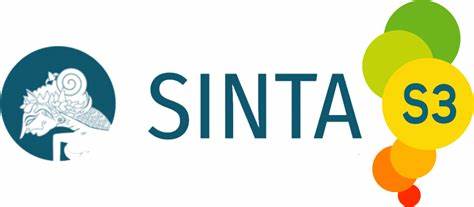The EFFECTIVENESS OF ARCADE GAMES IN IMPROVING THE UNDERSTANDING OF POETIC FIGURATIVE SPEECH
Abstract
This study explores the effectiveness of arcade games in improving high school students' understanding of figurative speech and examines students' perceptions of using arcade games as a learning tool. The study presents a novel and captivating strategy to enhance students' literary comprehension, particularly in the use of figurative speech at the high school level. Using a mixed method of quantitative and qualitative approach, four selected student groups from two different schools were studied. The experimental group participated in sessions incorporating arcade games designed to teach figurative speech, while the control group followed traditional learning methods. Data was collected through pre- and post-intervention tests measuring students' understanding, along with a questionnaire evaluating their perceptions of arcade games as a learning tool. Statistical analysis was used to compare the differences in understanding between the two groups, providing knowledge into the effectiveness of arcade games in improving students' comprehension of figurative speech. The main finding from this research is that the use of arcade games significantly improves high school students' understanding of figurative speech and the students’ response toward the arcade game is mostly positive. The results suggest that arcade games can be a more effective and engaging method for teaching figurative speech compared to conventional approaches.
References
E. REFERENCES
Afjar, A. M., & Syukri, M. (2020, February). Attention, relevance, confidence, satisfaction
(ARCS) model on students’ motivation and learning outcomes in learning physics.
In Journal of Physics: Conference Series (Vol. 1460, No. 1, p. 012119). IOP
Publishing.
Ariyanto, M. P., Nurcahyandi, Z. R., & Diva, S. A. (2023). Penggunaan Gamifikasi
Wordwall untuk Meningkatkan Hasil Belajar Matematika Siswa. Mathema: Jurnal
Pendidikan Matematika, 5(1), 1–10.
Auliyani, F., Kustina, R., & Kasmi, H. (2022). Analisis Gaya Bahasa Pada Puisi “Rencong”
Karya Fikar W Eda Dan Relevansinya Terhadappembelajaran Sastra Di SMA
Kelas Xi. Jurnal Ilmiah Mahasiswa Pendidikan, 3(1).
Cardoso, P. J. C. (2016). Playing in 7D: an action-oriented framework for video
games (Doctoral dissertation, Universidade do Porto (Portugal)).
Chan, K., Wan, K., & King, V. (2021, June). Performance over enjoyment? Effect of game-
based learning on learning outcome and flow experience. In Frontiers in
education (Vol. 6, p. 660376). Frontiers Media SA.
Cheong, C., Filippou, J., & Cheong, F. (2014). Towards the gamification of learning:
Investigating student perceptions of game elements. Journal of Information Systems Education, 25(3), 233.
Dahalan, F., Alias, N., & Shaharom, M. S. N. (2024). Gamification and Game Based
Learning for Vocational Education and Training: A Systematic Literature Review.
Education and Information Technologies, 29(2), 1279–1317.
https://doi.org/10.1007/s10639-022-11548-w
Devendren, A., & Nasri, N. M. (2022). Systematic review: Students’ perceptions of the use
of gamification. International Journal of Academic Research in Business and Social
Sciences, 12(8), 144–164. http://dx.doi.org/10.6007/IJARBSS/v12-i8/14268
Gao, Y., Liu, C., Gao, N., Khalid, M. N. A., & Iida, H. (2022). Nature of arcade games.
Entertainment Computing, 41, 100469. https://doi.org/10.1016/j.entcom.2021.100469
Harsanti, D. W., & Lathifah, R. M. (2023). Pengaruh penerapan media Wordwall terhadap
keaktifan belajar peserta didik pada pembelajaran Bahasa Indonesia. In Prosiding Seminar Nasional Pendidikan Bahasa Indonesia (Vol. 1, No. 1).
Hidayatulloh, S., Praherdhiono, H., & Wedi, A. (2020). Pengaruh game pembelajaran
terhadap peningkatan hasil belajar pemahaman ilmu pengetahuan alam. JKTP J.
Kaji. Teknol. Pendidik, 3(2), 199–206.
Iskandar, S., Rosmana, P. S., Agnia, A., Farhatunnisa, G., Fireli, P., & Safitri, R. (2022).
Pengunaan Aplikasi Baamboozle Untuk Meningkatkan Antusias Belajar Siswa di Sekolah Dasar. Jurnal Pendidikan Dan Konseling (JPDK), 4(6), 12500–12505. https://doi.org/10.31004/jpdk.v4i6.10545
Kaban, R., Sari , S. N. ., Naim, M. A. ., & Surbakti, A. B. . (2022). Perancangan game
Arcade "The Adventures in Maze". MEANS (Media Informasi Analisa
Dan Sistem), 7(1), 137–143. https://doi.org/10.54367/means.v7i1.1906
Kaya, O. S., & Ercag, E. (2023). The impact of applying challenge-based gamification
program on students’ learning outcomes: Academic achievement, motivation and
flow. Education and Information Technologies, 28(8), 10053–10078.
Kusyani, D., & Adelina Ray, S. (2023). Efektivitas Baamboozle terhadap Kemampuan
Memahami Teks Cerita Rakyat Sumatera Utara pada Siswa Kelas VII
SMP. GHANCARAN: Jurnal Pendidikan Bahasa Dan Sastra Indonesia, 463—480.
https://doi.org/10.19105/ghancaran.vi.11783
Liapis, A. (2016). Exploring the visual styles of arcade game assets. In Evolutionary and
Biologically Inspired Music, Sound, Art and Design: 5th International Conference,
EvoMUSART 2016, Porto, Portugal, March 30--April 1, 2016, Proceedings 5 (pp.
-109). Springer International Publishing.
Mahyudi, A. (2022). Penggunaan Media Wordwall Dalam Meningkatkan Penguasaan
Bahasa Baku Siswa Di Sekolah Menengah Pertama. ULIL ALBAB: Jurnal Ilmiah
Multidisiplin, 1(6), 1687–1694.
Metwally, A. H. S., Nacke, L. E., Chang, M., Wang, Y., & Yousef, A. M. F. (2021).
Revealing the hotspots of educational gamification: An umbrella review.
International Journal of Educational Research, 109, 101832.
https://doi.org/10.1016/j.ijer.2021.101832
Mohajan, H. K. (2020). Quantitative research: A successful investigation in natural and
social sciences. Journal of Economic Development, Environment and People, 9(4),
–79.
Newman, J. (2016). Mazes, monsters and multicursality. Mastering Pac-Man 1980–
Cogent Arts & Humanities, 3(1).
https://doi.org/10.1080/23311983.2016.1190439
Orsoni, M., Dubé, A., Prandi, C., Giovagnoli, S., Benassi, M., Mazzoni, E., & Benvenuti,
M. (2023). Learning Landscape in Gamification: The Need for a Methodological
Protocol in Research Applications. Perspectives on Psychological
Science, 0(0). https://doi.org/10.1177/17456916231202489
Panse, P., Panse, T., Verma, R., Bhayal, D. K., & Agrawal, A. (2018, November). An
Edutainment Approach to Enhance Teaching–Learning Process. In International
Conference on Advanced Computing Networking and Informatics: ICANI-
(pp. 501-511). Singapore: Springer Singapore.
Pradani, T. G. (2022). Penggunaan media pembelajaran wordwall untuk meningkatkan
minat dan motivasi belajar siswa pada pembelajaran IPA di Sekolah Dasar. Educenter: Jurnal Ilmiah Pendidikan, 1(5), 452–457.
Ramnath, R., Kalaiyarasan, G., Sasikumar, N., & Govindaraja, M. M. K. (2019).
Edutainment Strategies in Enhancing Reading Comprehension among Undergraduate Students. International Journal of Recent Technology and Engineering, 8.
Rohlfshagen, P., Liu, J., Perez-Liebana, D., & Lucas, S. M. (2017). Pac-man conquers
academia: Two decades of research using a classic arcade game. IEEE Transactions
on Games, 10(3), 233–256.
Rookes, P., & Willson, J. (2005). Perception: Theory, development and organisation.
Routledge.
Safitri, M., & Rasyid, M. N. (2022). Penerapan Media Web Wordwall untuk Meningkatkan
Hasil Belajar PAI Siswa di SMP Negeri 2 Langsa. Al-Ikhtibar: Jurnal Ilmu
Pendidikan, 9(1), 47–56. https://doi.org/10.32505/ikhtibar.v9i1.4249
Sar, S., & Murni, S. M. (2012). Political Dystopia in Suzanne Collins’the Hunger
Games. GENRE Journal of Applied Linguistics of FBS Unimed, 1(2).
Sasmita, M. A., & Purnamasari, N. L. (2018). Perbandingan metode pembelajaran
edutainment dan metode pembelajaran konvensional terhadap prestasi siswa pada
mata pelajaran teknologi informasi dan komunikasi (TIK) Di SMA Negeri 1
Kalidawir. JoEICT (Journal of Education And ICT), 2(1), 27-34.
https://doi.org/10.29100/joeict.v2i1.700
Septiani, E., & Sari, N. I. (2021). Analisis unsur intrinsik dalam kumpulan puisi goresan
pena anak matematika. Pujangga: Jurnal Bahasa Dan Sastra, 7(1), 96–114.
Tanjung, M. A. P. (2011). Analisis Pengaruh Storytelling Terhadap Game Lorong Waktu–
Pangeran Dipenogoro Sebagai Media Edukasi Sejarah. Ilm. Komput. dan
Inform, 5(3), 1-4.
Downloads
Published
Issue
Section
License

This work is licensed under a Creative Commons Attribution-ShareAlike 4.0 International License.
The author is responsible for acquiring the permission(s) to reproduce any copyrighted figures, tables, data, or text that are being used in the submitted paper. Authors should note that text quotations of more than 250 words from a published or copyrighted work will require grant of permission from the original publisher to reprint. The written permission letter(s) must be submitted together with the manuscript.




